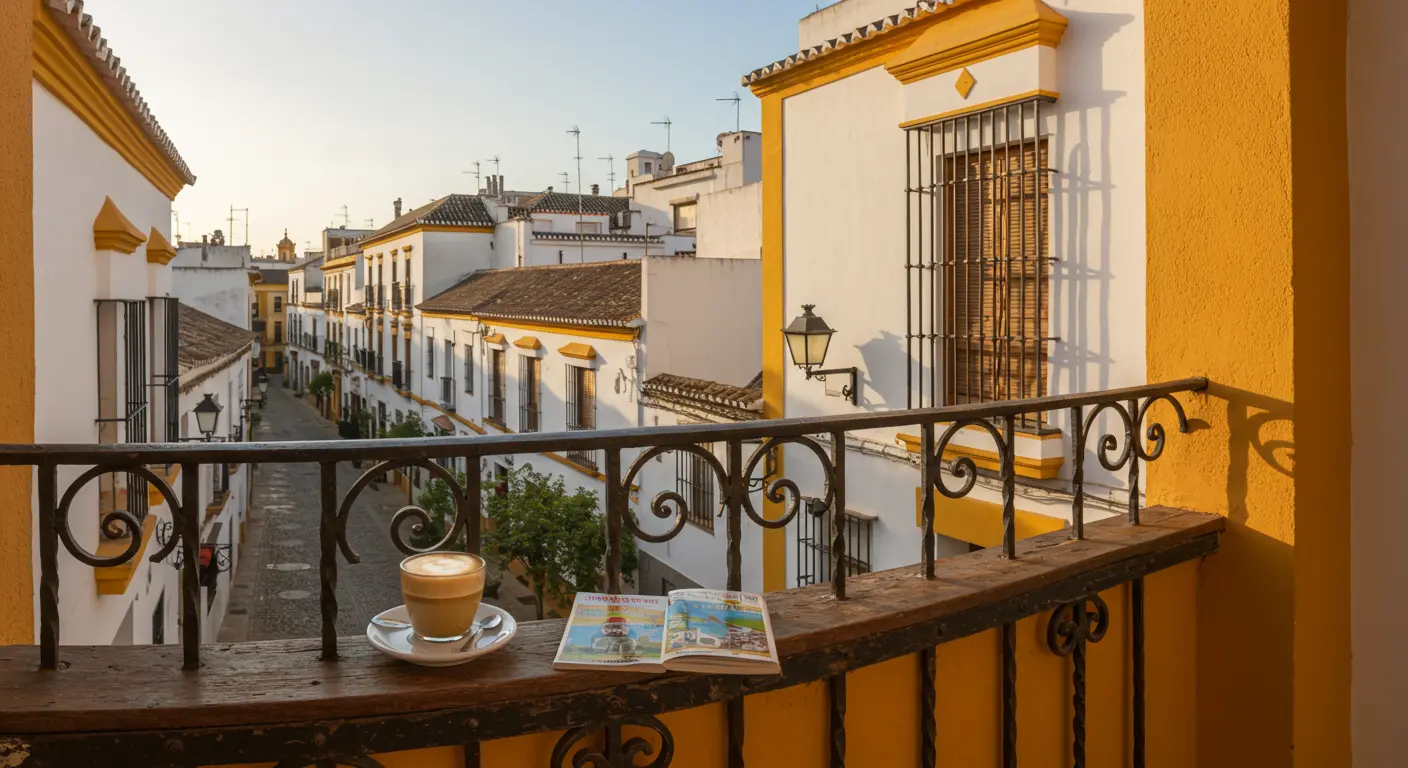Table of Contents
So, you’ve decided to take the plunge and book a Spain vacation. Excellent choice. Suddenly, your mind is probably swirling with images of paella, flamenco, Gaudí’s architecture, and sun-drenched coastlines. But then, a slight panic sets in. Where do I even start? Spain is a wonderfully diverse country, and trying to see it all in one go is a recipe for exhaustion, not enjoyment.
I remember my first trip. I had two weeks and a wildly ambitious plan to hit six cities. I spent more time on trains than actually soaking in the culture. I learned the hard way, so you don’t have to.
This guide is designed to cut through the overwhelm. We’ll walk through everything a first-timer needs to know—from choosing the right regions to visit and understanding local customs to navigating transportation like a pro. Forget the generic lists; this is a practical, step-by-step plan to build the Spanish adventure you’re dreaming of.
Why Spain? More Than Just Beaches and Paella
Sure, the Costa del Sol is stunning, and the food is a reason to go all by itself. But Spain’s real magic lies in its incredible regional diversity. As noted by the Spanish Tourism Board, Turespaña, the country leads global tourism rankings not just for its climate, but for its vast cultural heritage, having the second-highest number of UNESCO World Heritage Sites in the world.
In the north, you have the green, rugged landscapes of Galicia and the Basque Country, feeling a world away from the arid south. The center is a historical heartland, with castles and medieval cities telling stories of empires past. Each of the 17 autonomous communities has its own distinct identity, language in some cases, and culinary traditions. Understanding this is the first key to planning a trip that feels authentic, not just touristy.
Crafting Your Perfect Spain Itinerary: A Realistic Approach
The biggest mistake beginners make is underestimating distances. Madrid to Barcelona is a 3-hour high-speed train ride. Madrid to Seville is about 2.5 hours. Trying to do Madrid, Barcelona, Seville, and Granada in 10 days means you’ll be constantly unpacking and repacking.
Here are two trusted itinerary frameworks based on a 10-12 day trip, recommended by seasoned travel planners like Rick Steves and Fodor’s.
Option 1: The Classic Taster (Madrid + Andalusia)
This route is perfect for first-timers who want a mix of big-city energy, profound history, and iconic Spanish culture.
- Days 1-4: Madrid. Use the capital as your hub. Dive into the Prado Museum, relax in Retiro Park, eat your way through the Mercado de San Miguel, and take a day trip to the historic UNESCO city of Toledo (just 30 minutes by train). Madrid’s energy is contagious.
- Days 5-7: Seville. Fly or take a 2.5-hour high-speed train south. Fall in love with Seville’s romantic alleys, the breathtaking Alcázar palace complex (a Game of Thrones filming location), and the passion of a live flamenco show.
- Days 8-9: Granada. A 3-hour bus or train ride east brings you to the foot of the Sierra Nevada mountains. Here, you’ll witness the magnificent Alhambra, a pinnacle of Moorish architecture. Pro Tip: Book your Alhambra tickets months in advance. They sell out.
- Days 10-11: Málaga & Departure. Enjoy a final day or two on the coast in Málaga (just over an hour from Granada) before flying out of its international airport.
Option 2: The Mediterranean Blend (Barcelona + Basque Country)
Ideal for those drawn to modernist art, vibrant city life, and spectacular coastal scenery.
- Days 1-4: Barcelona. Get lost in the Gothic Quarter, marvel at Gaudí’s Sagrada Família and Park Güell, and stroll down Las Ramblas. Make time for the incredible food markets like La Boqueria.
- Days 5-7: San Sebastián. Take a scenic 6-hour train ride (or a short flight) north to the Basque Country. San Sebastián is a foodie’s paradise, boasting more Michelin stars per capita than almost any other city. The picturesque La Concha beach and the incredible pintxo (small snack) bars are unforgettable.
- Days 8-9: Bilbao / Rioja Wine Region. A quick bus ride from San Sebastián, Bilbao is home to the awe-inspiring Guggenheim Museum. Alternatively, take a day tour into the nearby La Rioja region for some of Spain’s best wine tasting.
- Day 10-11: Return to Barcelona for Departure.
Navigating Spain: Trains, Planes, and Automobiles
Getting around Spain is remarkably easy thanks to its modern infrastructure.
- Renfe Trains: Spain’s high-speed AVE train network is fantastic. It connects major cities quickly, comfortably, and from city center to city center. Book tickets in advance on the Renfe website for the best prices.
- Buses: For smaller towns or traveling between regions like Andalusia, buses (like ALSA) are often cheaper and still very comfortable.
- Flights: For jumping from north to south (e.g., Barcelona to Seville), low-cost carriers like Vueling and Iberia Express can save a lot of time.
- Metro/Taxis in Cities: Madrid and Barcelona have excellent, user-friendly metro systems. Uber operates in major cities, but traditional taxis are plentiful and regulated.
Living Like a Local: Cultural Nuances You Should Know
To really earn trust and have a genuine experience, embracing local customs is key.
- The Timing of Life is Different. Spaniards eat late. Lunch (la comida) is around 2-4 PM, and dinner (la cena) rarely starts before 9 PM. Embrace it! This also means many shops close for a siesta (around 2-5 PM), especially in smaller towns.
- Tapas is a Way of Life. In many cities, especially in the south, you get a small free tapa with your drink. It’s not just food; it’s a social ritual. Move from bar to bar, having a drink and a small bite at each.
- A Few Go-To Phrases. While English is common in tourist areas, knowing a few words of Spanish goes a long way.
- Hola (Hello)
- Por favor (Please) / Gracias (Thank you)
- La cuenta, por favor (The check, please)
- ¡Salud! (Cheers!)
Budgeting for Your Spanish Adventure: A Realistic Breakdown
Spain offers fantastic value, but costs can vary. Here’s a rough idea per person per day (mid-range travel):
- Budget Traveler (Hostels, markets, buses): €50-€70
- Mid-Range Traveler (3-star hotels, restaurant meals, trains): €100-€150
- Luxury Traveler (4-5 star hotels, fine dining, taxis): €250+
Pro Tip: Many of Spain’s best experiences are free or cheap: wandering ancient neighborhoods, visiting cathedrals (a small fee often applies), and people-watching from a plaza with a cheap coffee.
FAQs: Your Spain Vacation Questions, Answered
Q: What’s the best time of year to visit Spain?
A: The shoulder seasons—April to June and September to October—are absolute perfection. The weather is warm and sunny, but the oppressive summer heat and the peak tourist crowds have dissipated. You’ll have a much more comfortable experience.
Q: Is it safe to travel in Spain?
A: Spain is considered one of the safest countries in Europe for travelers. However, as with any major tourist destination, pickpocketing in crowded areas like Las Ramblas in Barcelona or the Madrid metro is a real issue. Always keep your valuables secure and be aware of your surroundings. Use a cross-body bag and avoid keeping your phone in your back pocket.
Q: Do I need to rent a car for my Spain vacation?
A: For most first-time itineraries focusing on major cities, no, you absolutely do not need a car. The train system is superior. A car only becomes necessary if you want to explore deep into the countryside, like the pueblos of Andalusia or along the Camino de Santiago.
Q: I’m a vegetarian/vegan. Will I find food to eat?
A: Absolutely! While Spain is known for its jamón (ham), the times are changing. Major cities like Madrid, Barcelona, and Valencia have a thriving vegan scene. Even in traditional restaurants, you can find fantastic options like pimientos de padrón (blistered peppers), tortilla española (egg and potato omelet, ask for sin cebolla if you don’t want onion), gazpacho (cold tomato soup), and escalivada (roasted vegetables).
Your Spanish Adventure Awaits
Planning your first Spain vacation shouldn’t be a source of stress—it’s the first step toward an incredible journey. The key is to slow down. Don’t try to conquer the country. Pick one or two regions, immerse yourself in the local pace of life, savor every bite, and get delightfully lost down a few cobblestone streets.
The memories you’ll make—watching a fiery flamenco performance, tasting olive oil fresh from the press, or witnessing the Alhambra glow at sunset—will stay with you long after you’ve returned home.
So, what are you waiting for? Start mapping out your dream trip. Pick your itinerary, book those key attractions, and get ready to fall in love with España.
Have a specific question about your upcoming trip? Drop it in the comments below—I’d love to help out!




